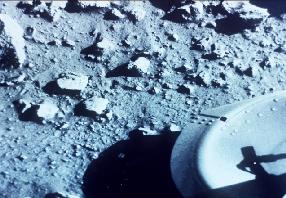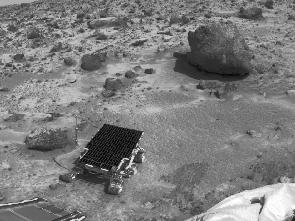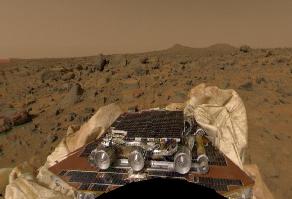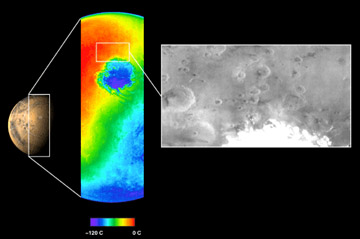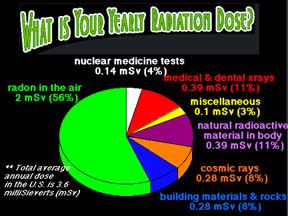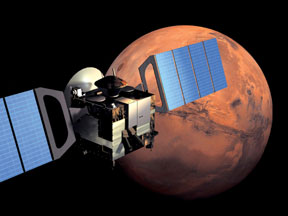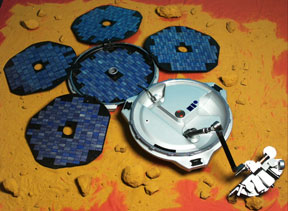Click on image for full size
Image from: NASA/JPL
The Exploration of Mars
Since 1960, the Russian and American space agencies have sent many spacecraft to Mars. Some have been a great success while others didn't even make it into space!
Mariner 4 was the first mission to make it successfully to Mars. It arrived in 1965. The Mariner 4, 6, 7, & 9 missions took tons of pictures of the Red Planet and its moons. Between 1971-1973, the USSR sent Mars 2, 3, 4, 5, & 6 to Mars. With varying success, these orbiters and landers sent back data about the Martian atmosphere, surface, gravity, and temperature. In the mid 70's, the Viking missions were very successful. In all, these orbiters and landers returned over 56,400 images of the Martian surface!
After a quiet decade, Mars exploration took off again with the Mars Observer mission launched in 1992. Unfortunately, this spacecraft was lost due to explosion! NASA built upon this experience and created the successful Mars Surveyor Program which included the Mars Pathfinder and Mars Global Surveyor missions. In 1998, Japan also joined in Mars exploration with the Nozomi spacecraft.
On April 7, 2001, the 2001 Mars Odyssey was launched. The 2001 Odyssey has been collecting data on what chemicals and minerals make up the Martian surface. It is also providing information about possible radiation hazards for future human explorers. The European Space Agency's Mars Express mission, including the Beagle 2 lander, arrived at Mars in December 2003. NASA launched twin Mars Exploration Rovers (MER) in June and July of 2003. They landed on the Red Planet in January 2004. Although they were only supposed to keep working for 90 days on the Martian surface, both are still going strong four years later!
NASA's Mars Reconnaissance Orbiter (MRO) was launched in August 2005 and went into orbit around Mars in March 2006. It is making very detailed maps of the Red Planet. Those maps will help scientists select landing sites for other future missions. The Phoenix Mars Lander was launched in August 2007. It will land near the North Pole of Mars in May 2008. Phoenix will use a robotic arm to dig up samples of Martian soil. Scientists hope Phoenix will find water ice just below the surface.
What about future missions? Another rover, NASA's Mars Science Laboratory, is supposed to blast off in the fall of 2009. That rover will be even bigger than the Mars Exploration Rovers that have done such a great job. We don't know yet what missions to Mars will come after that. We may send airplanes or balloons to roam the Martian skies. We might send a drilling rig to search for water and maybe signs of life underground. Scientists also hope a there will be sample return mission some day. It would bring Mars rocks back to Earth so scientists could study them in laboratories on Earth.







